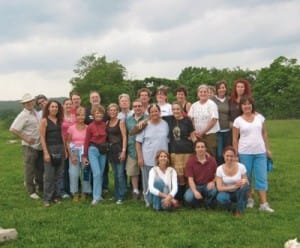By Robert Weiss LCSW, CSAT-S What do you think? Just as concrete and predictable diagnostic criteria help medical professionals determine whether your burning stomach pain is a case of chili-induced heartburn or appendicitis, so do categories of well-researched mental health symptoms provide the scientific underpinning for the identification of psychiatric and emotional disorders. New mental health diagnosis are not arbitrarily determined, but come about as consistent sets of reliable sample data are codified through years of repeatable clinical research and study. This is the science of diagnosis. The Diagnostic and Statistical Manual of Mental Disorders or DSM, renewed or revised in sporadic 10 to 20 year increments is, as every trained psychotherapist knows, the diagnostic ‘bible’ of mental health. In 2013, the American Psychiatric Association (APA) through their various working groups and committees will deliver a shiny new DSM 5, the formal guide that will differentiate and re-standardize our definition of mental health for at least a decade to come. Like it or not, there is no single work more important to the daily practice of mental health diagnosis and treatment in America than the DSM. Though some clinicians consider the book demeaning as it purports to apply broad labels to the behavior of individual human beings, the DSM remains the authoritative guide to mental health diagnosis and its influence cannot be underestimated. The codification and language of the upcoming DSM 5 will come to establish not only what is considered mental health from pathology, but will also help determine and recategorize our systems of insurance reimbursement and legal casework along with the content and organization of counseling psychology education for a generation to come. Although the words Sexual Addiction first appeared in the DSM III, offered as a way to describe certain types of sexual disorders, those same words were removed from the subsequent DSM IV and IV-TR reportedly due to a lack of research. Unfortunately when persistent emotional and psychiatric problems lack a formal name or diagnosis, they can quickly become the stuff of subjective moral judgment. Without a diagnostic category sex addicts can just as easily referred to as perverts, binge eaters called fat and lazy etc. Had we not arrived at a workable diagnosis for alcoholism alcoholics might continue to be considered ‘bums’ and judged as the ‘amoral’ people they were thought to be only a generation ago. Clear diagnostic criteria allow us to view alcoholism and drug addictions to be the treatable symptoms of predictable psycho- biological disorders, now managed as the chronic illnesses they have proven to be. Below are the proposed criteria for the DSM 5 for a disorder most commonly known as Sexual Addiction – being considered for the DSM 5 by the name Hypersexuality. As a specialist in the treatment of compulsive and addictive sexual disorders for over 20 years and having founded two of the sexual addiction treatment programs currently designated as research sites for this proposed diagnosis, the Sexual Recovery Institute (SRI) in Los Angeles and The Center for Relationship and Sexual Recovery (CRSR) at The Ranch in Tennessee, I am eager to learn how others view both the potential reintroduction of this disorder as a formal mental health diagnosis and the criteria proposed below. Comments are very welcome … DSM 5 PROPOSED DIAGNOSTIC CRITERIA FOR HYPERSEXUAL DISORDER A. Over a period of at least 6 months, recurrent and intense sexual fantasies, sexual urges, or sexual behaviors in association with 3 or more of the following 5 criteria:
- Time consumed by sexual fantasies, urges or behaviors repetitively interferes with other important (non-sexual) goals, activities and obligations.
- Repetitively engaging in sexual fantasies, urges or behaviors in response to dysphoric mood states (e.g., anxiety, depression, boredom, irritability).
- Repetitively engaging in sexual fantasies, urges or behaviors in response to stressful life events.
- Repetitive but unsuccessful efforts to control or significantly reduce these sexual fantasies, urges or behaviors.
- Repetitively engaging in sexual behaviors while disregarding the risk for physical or emotional harm to self or others.
- Provided A: That there is clinically significant personal distress or impairment in social, occupational or other important areas of functioning associated with the frequency and intensity of these sexual fantasies, urges or behaviors.
- Provided B: That these sexual fantasies, urges or behaviors are not due to the direct physiological effect of an exogenous substance (e.g., a drug of abuse or a medication)
- Specify if: Masturbation, Pornography, Sexual Behavior with Consenting Adults, Cybersex, Telephone Sex, Strip Clubs, Other

